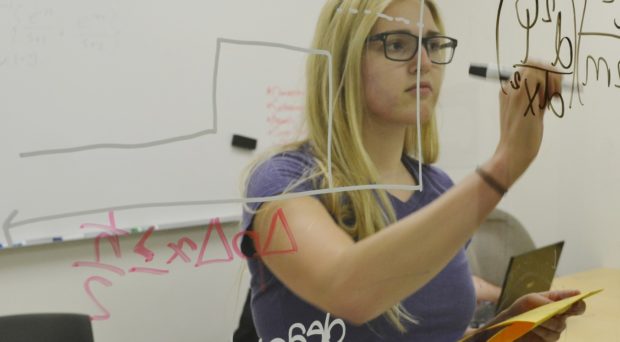
This blog can also be read on Springer Open
Australian enrollment statistics show that the proportion of females taking physics is generally declining. Western Australian enrolment data show that more than twice the number of males enroll in year 12 physics as compared with their female peers.
A better understanding of what influences female students to engage in science can help science educators, policy makers and family members provide support for females enrolling in STEM subjects, and pursuing STEM-related careers. My colleagues, Mary Oliver, Andrew McConney, Dorit Maor and I are part of a long-standing collaborative science education team studying science literacy and engagement in science.
In 2014, we published a study that attempted to better understand female 15-year-old high school students’ engagement in science. For female high school students, we found that the variability observed in their engagement in science was most strongly explained by science-related activities that happened outside of school. The role of teachers and instructional approaches inside science classrooms explained very little of the variation in girls’ engagement in science. These findings were consistent for Australian and Canadian students.
According to our previous study, the role of teachers and instructional approaches inside science classrooms explained very little of the variation in girls’ engagement in science. These findings were consistent for Australian and Canadian students.
Because other research emphasized the importance of teachers and their instructional practice, we were puzzled by these findings, and therefore followed up with in-depth interviews of students. We asked eighteen female high school students about influences they thought were important in sparking and sustaining their own science education and interest in science. We wanted to find out what these students thought influenced their engagement in high school physical science since this subject choice demonstrated their commitment to science.
Many other studies that seek to explain low female enrollment and/or engagement in physical science have relied on prospective designs in which girls are asked about their future plans for course enrollment or careers. Taking a different approach, we chose high school girls already studying physics and then asked them to think retrospectively to identify important influences in their decision-making.
Many other studies have relied on prospective designs in which girls are asked about their future plans, whereas we chose school girls already studying physics and then asked them to think retrospectively to identify important influences in their decision-making.
Findings
We found that these students identified their teacher, school culture, family, self and peers as the main influences on their interest and engagement in science. Although our students were enrolled in 11th grade high school physics, their top identified influences are somewhat similar to the results of a study of female university students enrolled in a STEM major (read here the post on this paper). Both the university students and the high school students mentioned their family, their teachers and their own interest and satisfaction in STEM. However, our study participants described their female friends as influential while the university students explained that their female friends questioned their choice of a STEM major.

For the high school students in our study, physics was regarded as a high-status subject and one participant noted “if you can do physics you’re seen as one of the top students at the school”. Other students noted the school culture that supported students studying science. Teachers were important influences and one student, when describing her teacher said “I think my physics teacher specifically goes out of his way to help the girls. But I just feel that, it’s not patronizing or anything, but it’s good.” However, a number of students were frustrated by family members who viewed physics as a “boy’s subject” and questioned their choice to study physics in high school.
On the other hand, many students said that their family positively influenced them, with many of the girls mentioning their siblings and one student emphasized the fun she had with her brother when he shared his science knowledge with her “My brother, I absolutely adored, and so anything he did I wanted to do as well. It wasn’t just about learning, it was also about having fun with my brother.”
Some students mentioned their own interest, and one noted that she liked to read science books so she could “feel clever and curious”. Students also explained that their peers help each other when studying science. They tend to rely on one another and as one student noted, they are actively involved in “helping each other”. Another participant, when talking about her friends said “You’re on the same level of education…they think of things differently to teachers so they can just explain it in their own words, maybe in simpler terms and stuff.”
Our findings provide a reminder to us all that simple fixes are probably not going to do much to improve female enrollment in high school physical science.
Our findings are consistent with many previous studies, in that the decision-making picture that emerges around females’ enrollment choices in science is multi-faceted. While this may not be a surprise, it does provide a reminder to us all that simple fixes are probably not going to do much to improve female enrollment in high school physical science. It is also a valuable reminder that knowledgeable, caring science teachers, supportive school science cultures and supportive family members can help sustain girls’ interest and confidence in doing science at school.
Comments